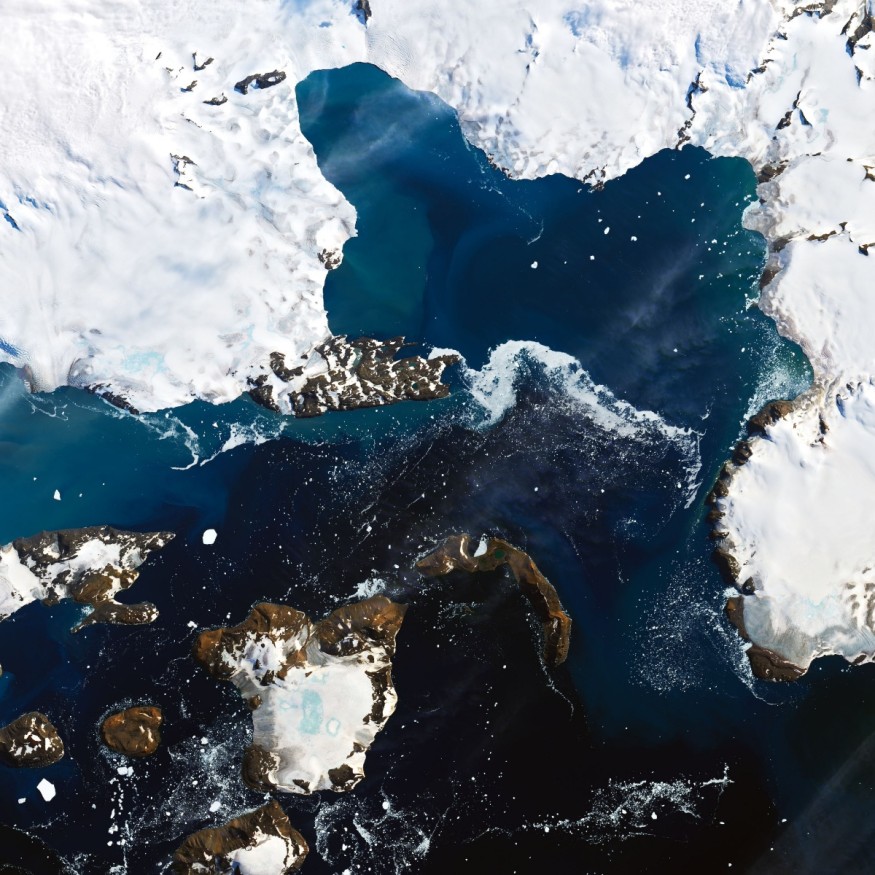

Antarctica recorded its hottest temperature for last month, melting Eagle Island by at least 4 inches and opening up pools of meltwaters on its surface. The hottest day was recorded on February 6, peaking at 64.9 degrees Fahrenheit, having the same temperature in Los Angeles on the same day.
Hottest Temperature Ever
Weather stations recorded the hottest temperature record in Antarctica last February 6, with a record of 18.3°C (64.9°F), the same temperature record in Los Angeles that day. The heatwave from February 5 to 13 had caused the melting of nearby glaciers. New NASA images showed that a quarter of ice had melted in 9 days of prolonged heat, making it the highest contributor to sea-level rise this summer.
Climate models reveal that on February 6, Eagle Island experienced peak melt measuring 30 millimeters or 1 inch. A total of 106 millimeters (4 inches) of snowpacks melted from February 6- February 11, which accounts for 20 percent of snow accumulation in just one event.
Mauri Pelto, a geologist at Nichols College in Massachusetts said that melt ponds developing quickly in Antarctica are rarely seen even during summer as it is one of the coldest places on earth. Such kinds of melting are mostly seen in Alaska and Greenland, but not usually in Antarctica. Climate scientist Xavier Fettweis said the heatwave is the highest contributor to sea-level rise this summer, after plotting the amount of meltwater that reached the ocean from the Antarctic peninsula.
A Lethal Combination of Meteorological Events
NASA reported that the recent February heatwave was caused by a combination of meteorological elements.
Cape Horn in Chile had high pressure earlier this February, allowing warm temperatures to build up. Southern Hemisphere Westerlies, a strong band of wind that circles the continent normally shields Antarctica from warm air masses. The westerlies are reported to be in a weakened state this February however, allowing the warm air from Chile to cross the Southern Oceana and reach the snowpacks. The recorded sea temperature in the areas is also higher by about 2-3 degrees, contributing to ice melts.
Foehn winds or strong, gusty winds that cause downslope windstorms on mountains that bring in warm air might have also contributed to the heat. Rajashree Tri Datta, an atmospheric researcher at NASA's Goddard Space Flight Center said that strong winds and higher temperatures can make a foehn-induced melt stronger.
One of the fastest-warming places on earth
WMO reports that temperature in the Antarctic Peninsula climbed to 5.4 degrees Fahrenheit (3 degrees Celsius) in the last 50 years. The amount of ice lost every year from the Antarctic ice sheet has increased six times from 1979 to 2017. The land area of the Antarctic Peninsula is 14 million km2, with the ice sheet reaching up to 4.8 kilometers thick. The said ice sheet holds 90% of the world's freshwater.
WMO also emphasizes that several studies have shown that the rapid melting of Antarctica's massive glaciers is due to man-made gas pollution that traps the earth's heat. It is estimated that Antarctica's ice sheet holds enough water to raise global sea levels by 200 feet. The rise in sea levels, in turn, has dire consequences for millions of people living along the world's coast, and the entire marine ecosystem.
© 2026 NatureWorldNews.com All rights reserved. Do not reproduce without permission.





